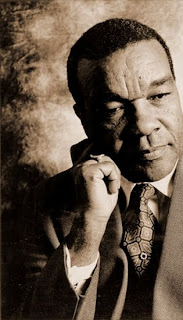The record, three-year gains Baltimore City Public Schools reported in its dropout and graduation rates earlier this month were largely driven by the academic progress of its African American male students, new data show. City Schools’ overall dropout rate is down 56 percent and its graduation rate is up 10 percent in the last three years. According to district analysis, the gains for African American male students during this time outpaced the district rates: Their dropout rate is down 59 percent, and their graduation rate is up 12.4 percent. Local leaders and national education experts are hailing the Baltimore findings as an important exception to what have been troubling national trends for this group of students.
The number of African American male dropouts in City Schools decreased from 1,439 in 2006-07 to 593 in 2009-10. At the same time, the number of African American male graduates increased from 1,537 in 2006-07 to 1,724 in 2009-10. The bottom line: In 2006-07, City Schools had nearly equal numbers of African American male dropouts and graduates; by 2009-10 the district had nearly three times as many graduates as dropouts among African American males.
 | “These new results indicate that Baltimore City Public Schools is making unusual and outsized gains with African American males,” added Michael Casserly, Executive Director of the Council of Great City Schools. |
“Graduation rates are up substantially and dropout rates are down, exactly the trend line that every other major city school system wants, but too rarely achieves. Cities across the nation will beat a path to Baltimore to find out what the district is doing to make this kind of progress.”
“This is a noteworthy national accomplishment,” said Dr. Robert Balfanz of Johns Hopkins University’s Center for Social Organization of Schools. “District-level declines in dropout rates and gains in graduation rates often show little or no improvement among African American males. The Baltimore school district was able to move from nearly equal numbers of dropouts and graduates to three times as many graduates as dropouts in a short period of time. This should serve as a challenge to other districts, that rapid and large gains are possible.”
After releasing its high school performance results for 2009-10 on Oct. 6, City Schools continued to analyze the data to identify specific growth trends and challenges, and it zeroed in on a significant finding. One of the student subgroups that has historically struggled most, drove the overall progress of the district in graduation and dropout gains in the last three years.
City Schools had 1,481 fewer dropouts in 2009-10 than in 2006-07; of these, 846 were African American males, accounting for 57 percent of the district’s overall reduction in dropouts over three years. Similarly, the district had 303 more graduates in 2009-10 than in 2006-07; of these, 187 were African American males, accounting for 62 percent of the district’s overall increase in graduates over the last three years.
“This is very heartening news for everyone who cares about our schools and our city,” said Baltimore City Board of School Commissioners Chair Neil E. Duke. “These figures are testimony to a great deal of hard work by schools and community partners, and most of all by our students.”
“These numbers show that African American male students are not just improving—they are leading the way for the entire district,” said City Schools CEO Andrés A. Alonso. “I thank all of our students, and our school staff, parents and community partners whose hard work and commitment is reflected in these important results. Today we are able to affirm, with hard data, the insistence of our community for so long that our African American male students can and must succeed. But even as we celebrate this news, we must double and redouble our efforts until all of our students are succeeding.”
When it comes to actual dropout rates, the progress of City Schools’ African American males is outpacing that of the district overall:
* City Schools’ African American male dropout rate declined from 11.9 percent in 2006-07 to 4.9 percent in 2009-10—a 59 percent decrease.
* City Schools’ district dropout rate declined from 9.4 percent in 2006-07 to 4.1 percent in 2009-10—a 56 percent decrease.
Ditto with graduation:
* City Schools’ African American male graduation rate increased from 51 percent in 2006-07 to 57.3 percent in 2009-10—a 12.4 percent increase.
* City Schools’ district graduation rate increased from 60 percent in 2006-07 to 66 percent in 2009-10—a 10 percent increase.
“Baltimore’s schools continue to improve and move forward because we refuse to let anyone slip through the cracks,” said Mayor Stephanie Rawlings-Blake. “I am proud of Dr. Alonso, his administrators, principals and teachers for creating an environment where every student can be nurtured and succeed. I am also grateful for the parents and families of our most vulnerable students for giving them the support they need to stay in school and earn their diploma.”
“I commend Baltimore City Public Schools for taking important steps to tackle an issue that exists throughout our state and nation,” said State Superintendent of Schools Nancy S. Grasmick. “Strengthening the achievement of African American male students must remain a priority if we are to ensure that every student who exits Baltimore City schools is college and career-ready. These students must be given the opportunity to take their rightful place in our society.”
City Schools officials attribute the graduation and dropout gains among African American males to a range of strategies to reach out to students and support them in school. In the last two years the district has conducted several Great Kids Come Back campaigns, knocking on the doors of students who have dropped out of school and encouraging them to return; expanded middle and high school options so that more students have an easier middle to high school transition, and increased access to advanced academic, alternative and accelerator programs. At the same time, many schools are partnering with community-based organizations to pair those students who may be most marginally connected to school and vulnerable to gangs and other negative influences with youth specialists.
“The movement in these numbers reflects a wide range of strategies to get our students in school, engage them in learning and help them succeed,” said Jonathan Brice, Executive Director of Student Support for City Schools. “School staff and community partners have worked together, in many cases working long and unusual hours to help our students succeed. We have a lot more work to do, but it is great to know all their efforts are showing results.”
Local leaders and organizations that have focused for years on improving results for African American males stress the significance of the dropout and graduation gains among City Schools’ African American male students.
“Based on the progress we are making in turning around the black male graduation and dropout rates in Baltimore City’s public schools, we can expect to see an increase in the number of black males entering college and a reduction in the high unemployment and incarceration rates that plague our community,” said Baltimore Urban League President and CEO J. Howard Henderson. “Today’s news is not only encouraging, but it validates what so many of us have been saying for so long—our African-American males can succeed when schools and community partners work together.”
“We celebrate the progress made to date because of the increased involvement of men, particularly African American men, with the city’s schools,” said Bishop Douglas Miles, co-chair of the Baltimore Interfaith Coalition. “But we cannot begin to relax our efforts until the graduation rate for African American males is 90 percent or better. The faith community will continue to press for even greater involvement.”
“This is important and encouraging news, because these improvements among our African American males in school will lead to improvements in so many other aspects of city life,” said Baltimore civic leader Marvin “Doc” Cheatham. “This is a critical step in the healing of Baltimore.” ###
FOR IMMEDIATE RELEASE October 20, 2010 CONTACT Ryan O’Doherty (410) 818-4269
ryan.odoherty@baltimorecity.gov




































